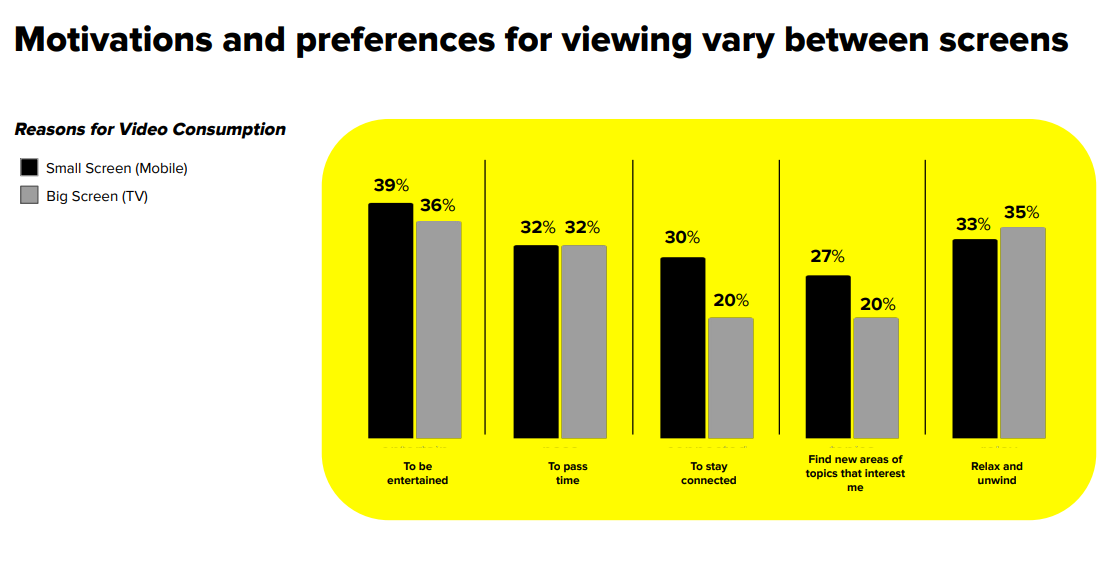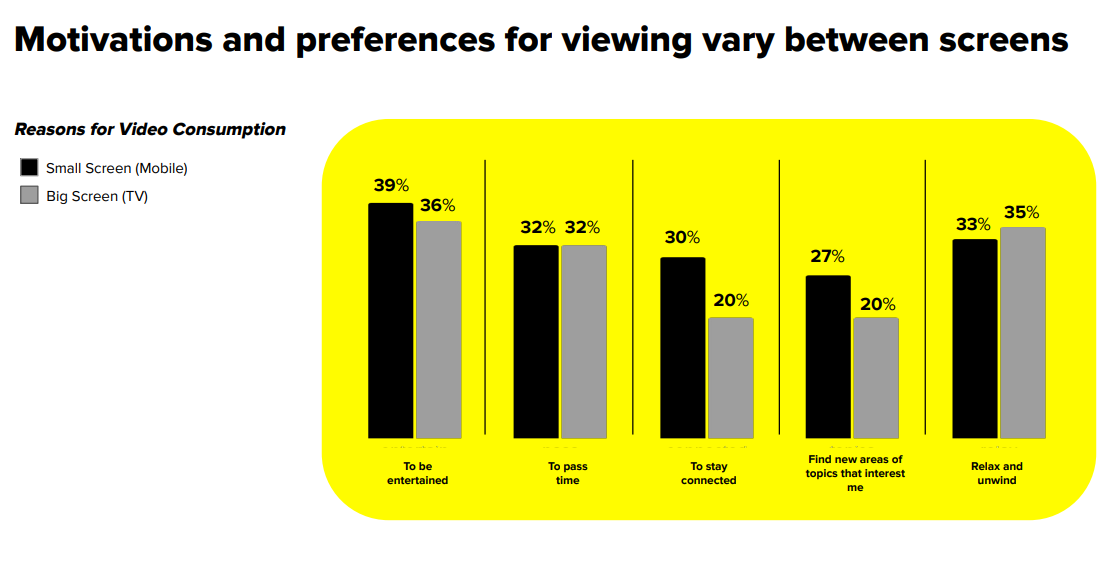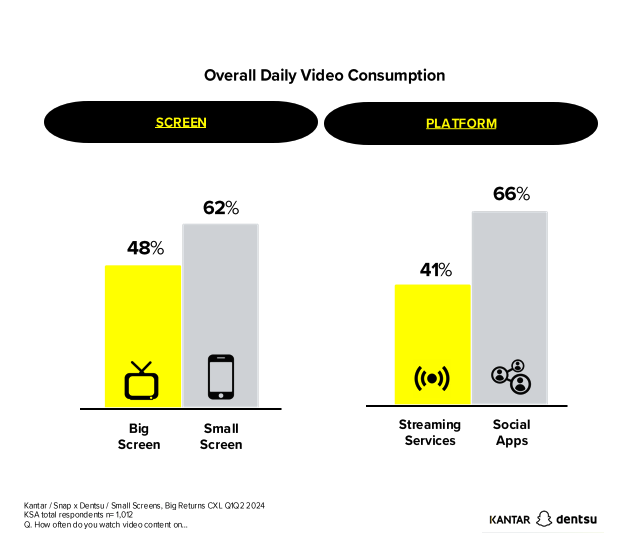
Valuable insights about how consumers are viewing videos on small screens (mobile) and big screens (television) are reshaping the advertising landscape in Saudi Arabia were revealed at a recent event in Riyadh.
The insights were drawn from a comprehensive study conducted by Dentsu, in collaboration with Snapchat and Kantar, which surveyed more than 1,000 Snapchat users aged 13-49 in KSA, revealing critical trends in video consumption.
By leveraging advanced methodologies, including biometric analysis, this research underscored the rising prominence of small screens as the primary platform for video consumption.

Implications for marketers
As the video landscape evolves, marketers must optimise their video budgets to maximise reach and effectiveness. This research emphasises the importance of running ads across various screen sizes and platforms to achieve the greatest brand impact.
While daily video consumption remains high on big screens, mobile device usage is becoming increasingly dominant in KSA. This shift creates opportunities for brands to advertise effectively on both screens.
Incorporating small screens into the media mix amplifies the brand lift from big screen ads, highlighting the significance of a dual-screen strategy. Advertising across both screen sizes drives stronger full-funnel growth and is particularly memorable among Gen Z audiences.
Lastly, including Snapchat alongside big screen ads enhances overall campaign performance, proving to be particularly impactful in driving brand favourability and consideration intent among daily Snapchat users especially in Saudi Arabia.

Small is beautiful
While daily video consumption remains high on both mobile and TV, small screens are starting to dominate in KSA. The findings show that 62 per cent of consumers watch videos on their mobile devices daily, compared with 48 per cent who also watch videos on their TVs.
The study also revealed how motivations for viewing differ by screen type. Consumers turn to both screens for entertainment and relaxation, but when it comes to staying connected or discovering new topics, they prefer small screens.
This shift highlights the necessity for a dual-screen strategy in media planning, while recognising the importance of both platforms.

Video is social
Small screens and social apps are pivotal for reaching consumers in Saudi Arabia, the study concluded. The study found that 66 per cent of respondents watch video content through social apps daily, while 41 per cent consume video via streaming services.
Small screens, big attention
Most consumers in Saudi Arabia give their full attention to content on both mobile devices and TV. However, mobile viewing continues to prevail.
When asked the question: “Which of these best describes how you usually watch video content on your mobile device/TV?”, the insights gathered from respondents revealed that 68 per cent of Gen Z give their full attention to small screens.

More screens, more impact
The research found that in Saudi Arabia, dual-screen exposure significantly enhances brand metric growth across full-funnel KPIs compared to reliance on big screen advertising alone.
This highlights the importance of advertising on both small and big screens to achieve optimal brand outcomes, emphasising a strategic approach that engages consumers across multiple platforms.
To further understand the impact of creative across platforms, exposure to both small and big screens resulted in more than 6 per cent increase in brand favourability and more than 7 per cent in purchase intent, illustrating the platform’s unique ability to engage its most active users.
Utilisation of both big screen and Snapchat proved to be highly memorable and impactful amongst Saudi Arabia’s Gen Z consumers, illustrating the platform’s unique ability to sway opinions.
Gen Z consumers also reported a more than 6 per cent lift in Aided Brand Awareness compared to Big Screen Only.










